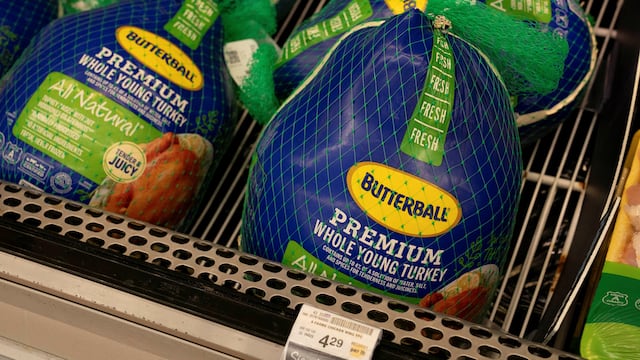It’s America’s main dish on Thanksgiving, but knowing the basics of where to probe and find the internal temperature when done is essential for a great meal.

Beware of dangerous bacteria levels in turkey: Thanksgiving cooking tips from the USDA

Here are some tips for cooking turkeys on Nov. 27 to make a great meal and keep everyone safe. Everyone loves some turkey meat on Thanksgiving, but those brave souls who prepare the meal know that it can be hard to get the meat just right. Too long in the oven and it comes out dry. Too little and the bacteria may still be present causing health problems for our guests.
“On the most popular food holiday of the year, we’re reminding consumers to follow safe food handling practices starting at the grocery store and going all the way through enjoying your leftovers,” the USDA recommends. “Following these basic steps can help keep your family and friends safe this holiday season.”
Shopping for, thawing and preparing the turkey
For starters, when shopping for your bird, get it from the fridge in the supermarket to your refrigerator at home ASAP. It is important to keep it out of the danger zone (40F - 140 F) for too long. Keep it in a plastic bag with no holes and separate from other food.
A frozen turkey is a good way to keep the meat out of the danger zone. Using cold water or just defrosting in the fridge is a safe way to prepare your turkey. Submerging the turkey in cold water until it is fully thawed is another safe way to get your turkey ready for roasting.
Before cooking, keep your turkey separate from other food and make sure to use clean surfaces for preparation. After getting the turkey ready for cooking, be sure to wash the areas where it was prepared.
Thanksgiving is almost here! 🦃 The best way to thaw your turkey is in the refrigerator. This is the safest method because the turkey will thaw at a consistent, safe temperature. This method takes some time, so allow one day for each 4-5lbs. pic.twitter.com/8LXUQcX4H8
— CABQ Environmental Health (@CABQEHD) November 21, 2024
Cooking temperature
The main point to keep in mind is that turkey needs to reach a minimum of 165º F. You can measure the temperature with a probe or food thermometer in three different places: the thickest part of the breast, the innermost part of the wing and of the thigh. It is essential to use a food thermometer even if you use a pop-up indicator. If you stuff your turkey, make sure the stuffing reaches 165ºF as well.
The perfect turkey 🦃 is all about timing and temperature. #Thanksgiving2024
— Bell & Evans (@BellandEvans) November 18, 2024
RECIPE ⬇️ in first comment ⬇️ pic.twitter.com/YUtgJ5qwPd
Serving and leftovers
Related stories
Serve the turkey within two hours of taking it out of the oven. Make sure to keep your hot foods hot and your cold foods cold. There’s nothing like a sandwich on Black Friday with left over turkey, but make sure the meat has been stored in a refrigerator at a temperature less than 40ºF.
These tips come from the experts at the USDA and any questions about planning or preparing Thanksgiving meal can be answered here:
- USDA Meat and Poultry Hotline at 1-888-MPHotline (1-888-674-6854)
- Email MPHotline@usda.gov
- Live chat at www.ask.usda.gov 10 a.m. to 6 p.m. ET, Monday through Friday to reach a food safety specialist in English or Spanish.
- The Meat and Poultry Hotline is also open on Thanksgiving Day from 8 a.m. to 2 p.m. Eastern Time.


Complete your personal details to comment